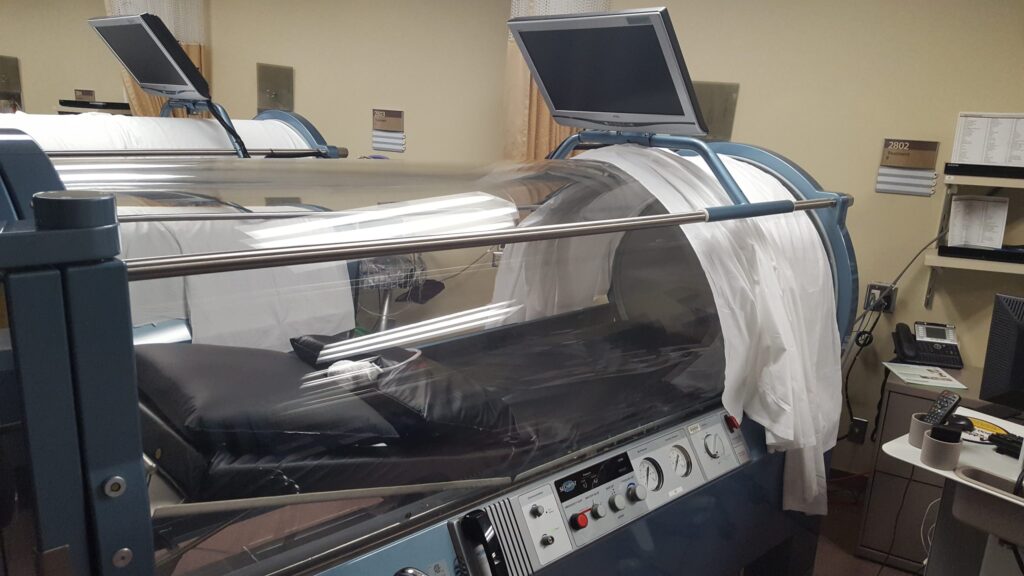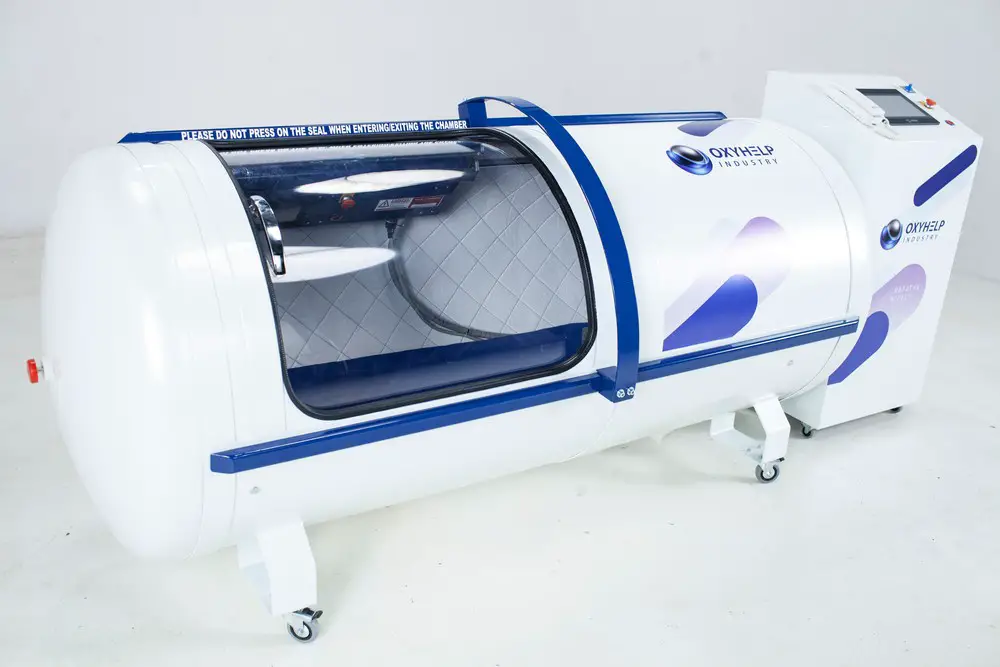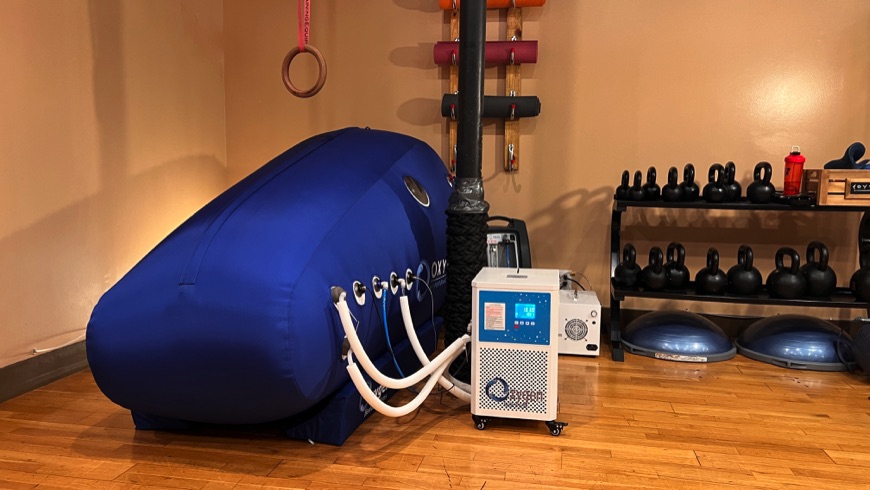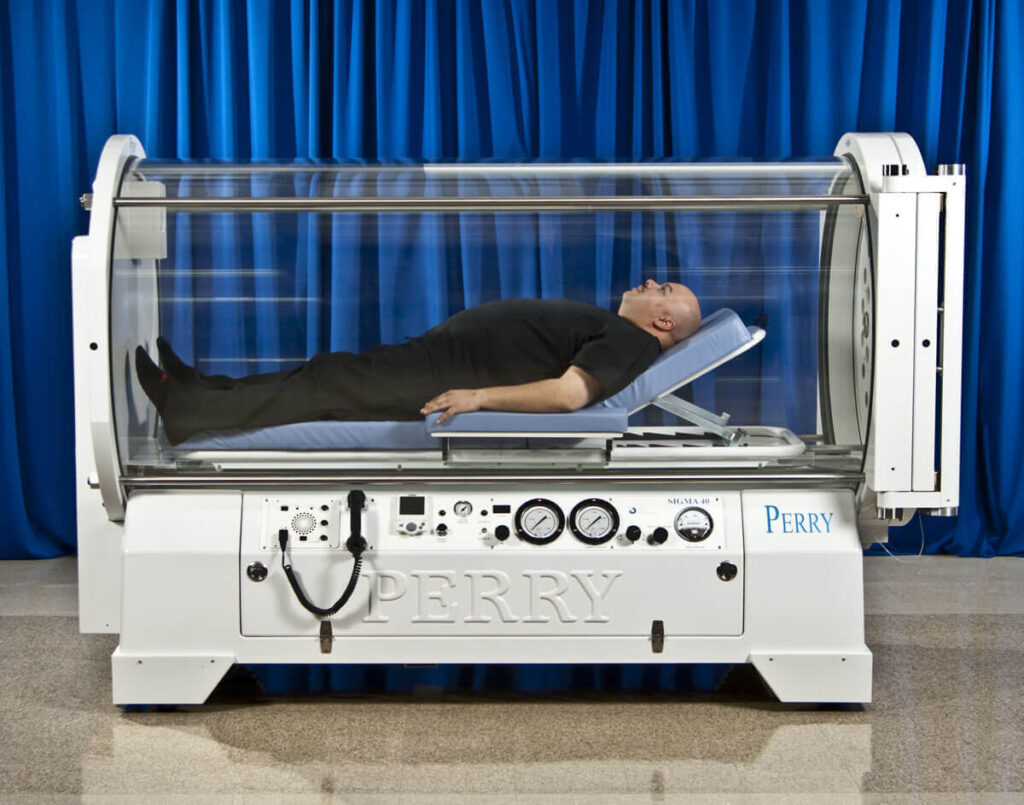A hyperbaric chamber is a medical device used to deliver hyperbaric oxygen therapy (HBOT). In these chambers, users breathe pure oxygen in a pressurized environment. This process significantly increases oxygen absorption by the body’s tissues. The benefits of using a hyperbaric chamber include enhanced wound healing, increased infection fighting capabilities, and improved circulation. These benefits make HBOT a sought-after treatment for various medical conditions.
Understanding Hyperbaric Therapy

Hyperbaric therapy enhances the body’s natural healing process by inhalation of 100% oxygen in a total body chamber, where atmospheric pressure is increased and controlled. It is used for a wide range of treatments, usually as a part of an overall medical care plan. Under hyperbaric conditions, oxygen dissolves more easily into the bloodstream, reaching tissues that need healing support. This therapy is particularly effective for non-healing wounds, as it accelerates collagen production and enhances white blood cell activity. Its benefits extend to treating carbon monoxide poisoning, certain types of brain and sinus infections, and skin grafts.
Types of Hyperbaric Chambers
Hyperbaric chambers come in two primary types: monoplace and multiplace. Monoplace chambers are designed for a single person and are cylindrical in shape. These chambers are often made of clear acrylic, allowing for patient visibility and comfort. Multiplace chambers, on the other hand, can accommodate multiple patients simultaneously, along with a medical attendant. They are typically constructed from metal and require an oxygen mask or hood for breathing. The decision between monoplace and multiplace chambers hinges on patient throughput, specific medical indications, and facility capabilities, in addition to space and budget considerations. You need to know to differentiate between the chambers before you purchase a hyperbaric chamber.
Budget Considerations
When setting a budget for a hyperbaric chamber, consider long-term costs, including maintenance and operational expenses. Some chambers might have higher upfront costs but lower long-term maintenance expenses. It’s also wise to check for insurance coverage or medical grants available for such medical equipment. Some manufacturers offer leasing options, providing a more affordable way to access this technology. Thoroughly comparing different models for energy efficiency and operational costs can also lead to significant savings over time. Remember, investing in a higher-quality chamber could mean lower costs and better safety in the long run.
Size and Space Requirements

In addition to the chamber’s footprint, consider the space needed for associated equipment, like compressors and fire extinguishers. Ensure there is ample room for patient preparation and post-treatment rest. The chamber should be easily accessible for emergency personnel as well. When measuring space, factor in the ease of installation and any potential need for structural modifications to your property. For those living in smaller spaces or apartments, portable monoplace chambers might be the most feasible option, though they often offer less interior space than stationary models.
Safety Features
In addition to the basic safety features, advanced hyperbaric chambers may include intercom systems for communication, built-in entertainment systems for patient comfort, and automatic control systems to regulate pressure and oxygen levels. It’s also important to ensure that the chamber has a reliable backup power system in case of power failure. Training in chamber operation and safety protocols is crucial for home users. Verify that the manufacturer provides thorough training materials or courses. The chamber should also have easy access for both entry and emergency exit.
Pressure and Oxygen Control
The chamber should also feature fail-safes to prevent over-pressurization and systems to monitor oxygen purity levels. Advanced models might include programmable profiles for different treatment protocols, allowing for greater customization of therapy sessions. Ensure that the chamber provides a consistent and stable environment throughout the treatment. Newer models may also offer remote monitoring capabilities, enabling healthcare providers to monitor treatments and make adjustments remotely. It’s crucial to ensure that these control systems are user-friendly, especially for those intending to use the chamber without professional assistance.
Portability and Mobility

Portable chambers, while offering mobility, might have different operational characteristics compared to stationary ones. Check if the portable model meets all the necessary safety and operational standards. Some portable chambers are designed for easier setup and breakdown, making them ideal for temporary installations or for therapists who travel to patients’ homes. Consider the weight and dimensions of the chamber when disassembled, as this will impact its transportability. Additionally, factor in any additional costs associated with moving and setting up the chamber in different locations.
Noise Levels
When evaluating noise levels, understand that some noise is inevitable due to the air compressors and pressurization systems. However, advancements in technology have allowed for quieter operation in newer models. If you are sensitive to noise, look for chambers with built-in noise reduction features or consider additional sound insulation for the room where the chamber will be housed. Remember, a quieter environment not only enhances the comfort of the user but can also be important for therapeutic reasons, as it creates a more relaxing and stress-free treatment experience.
Maintenance and Cleaning
Maintenance should include regular checks of air filters, seals, and compressor components. A clean and well-maintained chamber ensures optimal performance and safety. Also, consider the ease of cleaning the interior. Chambers with smooth, non-porous surfaces are easier to clean and disinfect. It’s important to use cleaning agents that are safe and recommended for the specific materials of your chamber to avoid damage. Keeping a maintenance and cleaning log can help track the condition of the chamber and schedule professional inspections as needed.
Warranty and Customer Support

When evaluating warranty and customer support, look for comprehensive coverage that includes parts, labor, and potential shipping costs for repairs. Understand the process for claiming warranty and the turnaround time for service. A responsive and knowledgeable customer support team is crucial, especially for troubleshooting and guidance on usage. Check if the manufacturer offers on-site support or remote assistance. Read reviews or ask for testimonials from current users to gauge the reliability of the manufacturer’s customer support. Good customer service can significantly enhance your experience and confidence in using the hyperbaric chamber.
Choosing the Right Hyperbaric Chamber
In conclusion, consider the type, size, safety features, pressure and oxygen control, noise levels, and maintenance requirements when choosing a hyperbaric chamber. Assess your budget, space, and need for portability. Don’t overlook the importance of warranty and customer support. Use this guide as a checklist to make an informed decision that best suits your needs.

